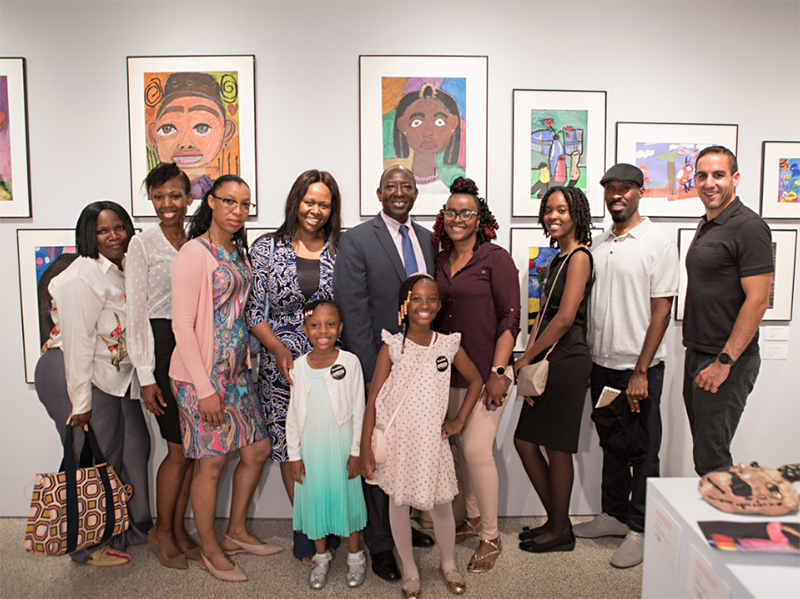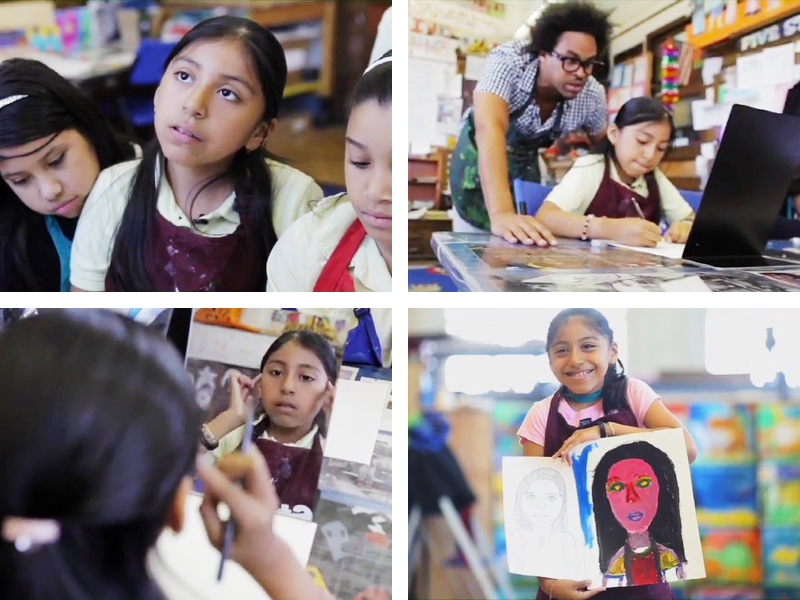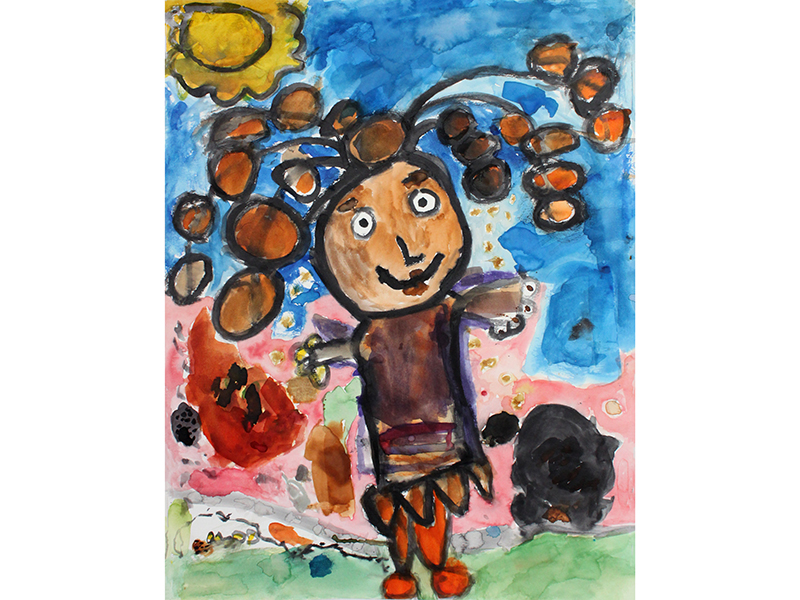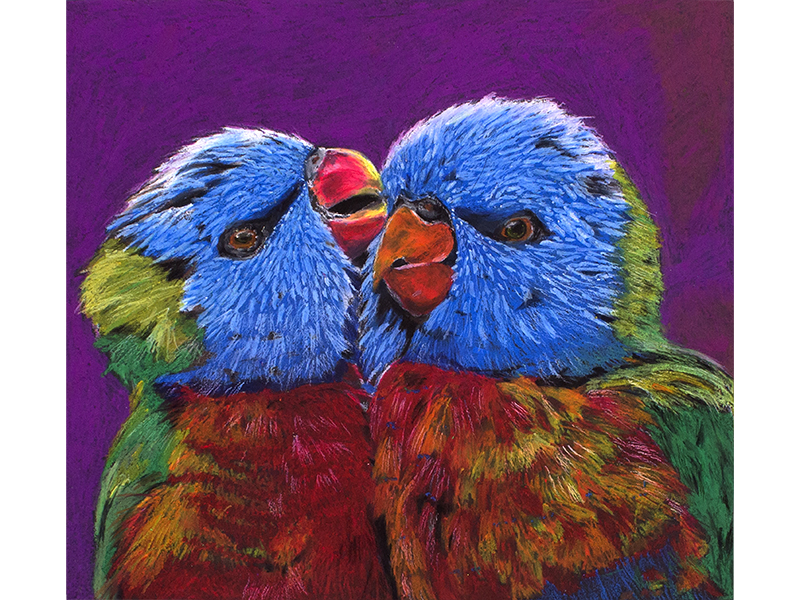Art and Soul: How Studio in a School Helps New Generations Find their Voice
Over the course of 43 years, Studio in a School has brought arts education to more than a million children—here’s why its impact is more important than ever
Over the course of 43 years, Studio in a School has brought arts education to more than a million children—here’s why its impact is more important than ever
In 1977, with New York City in the grip of a fiscal crisis, the city’s public schools made headlines as they cut art classes due to lack of funding. Philanthropist Agnes Gund read this news and made a decision: if the schools couldn’t bring art to their students, she would. As she says today, “An arts education is not a ‘frill’. It’s a child’s right to have it—no matter who they are.” And so, Studio in a School was born.
The non-profit organization now brings visual arts education to public schools and community centers across the city, drawing on the skills of professionally trained artists to instruct both students and their teachers. “Our mission is to place high-quality arts education in under-served schools and communities,” says Alison Scott-Williams, president of Studio in a School New York City. “And right now, there’s so much going on in the world that’s difficult, we need the arts more than ever.”

To illustrate the impact an arts education can really make, Scott-Williams recently hosted a discussion at the Christie’s International Real Estate Luxury Specialist Virtual Conference. Over a Zoom call, she gave attendees a glimpse into what the program can achieve, as she caught up with James Reynolds, a professional artist and Studio instructor for 16 years, and one of his former students, Jessica Angamarca. Read on for an extract of their inspiring conversation.
Alison Scott-Williams (ASW): James, can you share what it’s like when a Studio instructor first arrives at a public school?
James Reynolds (JR): We aim to integrate ourselves into every aspect of the school. We want to establish a presence that may not have necessarily been there before, because a lot of schools are without arts programs at the moment. So, it’s really an exciting place for us to be able to root what we do and integrate it into the fabric of the school.
Studio in a School taught me that my voice matters, and that what’s important to me is telling the story of my family and my community—Jessica Angamarca

ASW: Jessica, you first met James when you were a fifth grader at your school in the Bronx. What did having this program in your school mean to you?
Jessica Angamarca (JA): For me, it really had to do with finding my voice and realizing what I was capable of. When you’re creating something, it’s very abstract—it starts as a mere thought. But as you bring it to life something amazing happens, you realize what you’re capable of creating and just how far you can take your ideas. That helped me gain a lot of confidence and it pushed me to really engage in my school community. I was part of the debate team, I led art projects for my school, and I was valedictorian. And, because I had such a strong bond with Mr. Reynolds, it also helped me connect with other mentors throughout the rest of my school career.
ASW: James, can you share a little bit about the mentor process and what that’s like?
JR: I see the mentoring process as a very dualistic one between the artist and the student—I often learn as much from the students as they learn from me. My aim is for them to know that, even though I’m an adult, I’m just presenting suggestions. I want to build their skills, but I also want them to amplify their voices, take chances, and be able to reflect. Working together in that way allows us to have that symbiotic relationship back and forth, so that we’re all growing from that process.

ASW: Jessica, you’re now a student at Baruch College in New York, studying art and business. How did Studio in a School influence that path?
JA: Studio in a School laid the foundation for my voice as an activist. It taught me that my voice matters, and that what’s important to me is telling the story of my family and my community. It also helped me figure out a lot about myself and my future—because, when you create, you can’t help but put a little bit of yourself in your work. That’s really an eye opener, not only for those experiencing your artwork, but also for you in the process of creating it. The big question for me right now is how I can combine the creative liberties explored in art along with the practicalities of business, in order to serve my community and make a meaningful difference.
I want to build students’ skills, but I also want them to amplify their voices, take chances, and be able to reflect—James Reynolds

ASW: James, you’ve said that, “Art is a lens into the life of a student, enabling them to see and construct the world in a different way.” How do you want students to learn through the arts?
JR: Right now, we want our students to be able to envision, to imagine a world better and greater—past this time of the pandemic that we’re in. I really want them to know that there are infinite possibilities for them, and that we’re connecting what they do now in grade school to the careers that will take them throughout the course of the rest of their life.
The COVID-19 crisis has led to funding deficits, and has more than halved the number of public schools that Studio in a School is able to partner with in New York City. “This is a time of great need. But, as we figure out how to get out of the other side of this pandemic, our program can give children hope and remind them of the joy of creativity—things that we need to hold onto,” says Scott-Williams.
To help, visit studioinaschool.org/support
Banner image: A kindergarten group art project led by James Reynolds